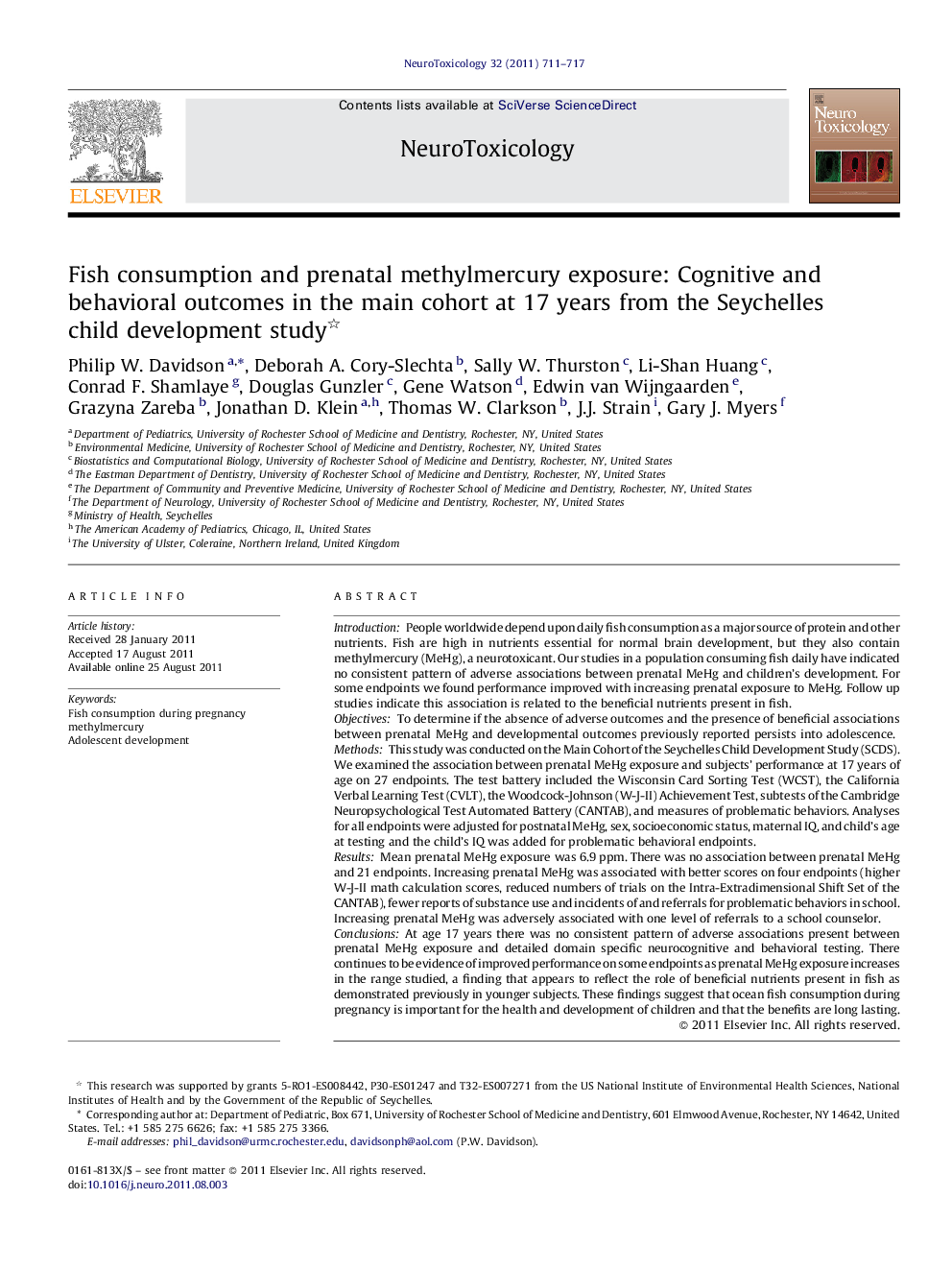| کد مقاله | کد نشریه | سال انتشار | مقاله انگلیسی | نسخه تمام متن |
|---|---|---|---|---|
| 5855420 | 1131741 | 2011 | 7 صفحه PDF | دانلود رایگان |

IntroductionPeople worldwide depend upon daily fish consumption as a major source of protein and other nutrients. Fish are high in nutrients essential for normal brain development, but they also contain methylmercury (MeHg), a neurotoxicant. Our studies in a population consuming fish daily have indicated no consistent pattern of adverse associations between prenatal MeHg and children's development. For some endpoints we found performance improved with increasing prenatal exposure to MeHg. Follow up studies indicate this association is related to the beneficial nutrients present in fish.ObjectivesTo determine if the absence of adverse outcomes and the presence of beneficial associations between prenatal MeHg and developmental outcomes previously reported persists into adolescence.MethodsThis study was conducted on the Main Cohort of the Seychelles Child Development Study (SCDS). We examined the association between prenatal MeHg exposure and subjects' performance at 17 years of age on 27 endpoints. The test battery included the Wisconsin Card Sorting Test (WCST), the California Verbal Learning Test (CVLT), the Woodcock-Johnson (W-J-II) Achievement Test, subtests of the Cambridge Neuropsychological Test Automated Battery (CANTAB), and measures of problematic behaviors. Analyses for all endpoints were adjusted for postnatal MeHg, sex, socioeconomic status, maternal IQ, and child's age at testing and the child's IQ was added for problematic behavioral endpoints.ResultsMean prenatal MeHg exposure was 6.9Â ppm. There was no association between prenatal MeHg and 21 endpoints. Increasing prenatal MeHg was associated with better scores on four endpoints (higher W-J-II math calculation scores, reduced numbers of trials on the Intra-Extradimensional Shift Set of the CANTAB), fewer reports of substance use and incidents of and referrals for problematic behaviors in school. Increasing prenatal MeHg was adversely associated with one level of referrals to a school counselor.ConclusionsAt age 17 years there was no consistent pattern of adverse associations present between prenatal MeHg exposure and detailed domain specific neurocognitive and behavioral testing. There continues to be evidence of improved performance on some endpoints as prenatal MeHg exposure increases in the range studied, a finding that appears to reflect the role of beneficial nutrients present in fish as demonstrated previously in younger subjects. These findings suggest that ocean fish consumption during pregnancy is important for the health and development of children and that the benefits are long lasting.
Journal: NeuroToxicology - Volume 32, Issue 6, December 2011, Pages 711-717